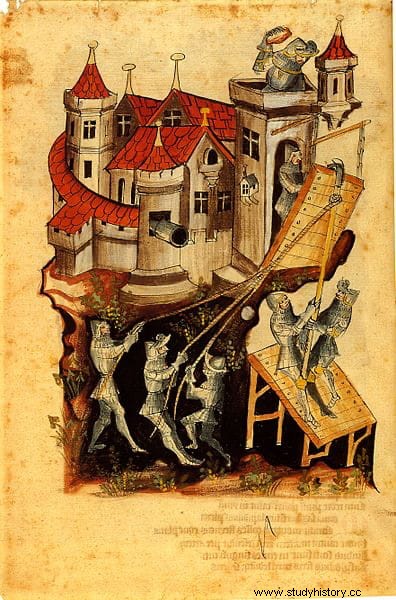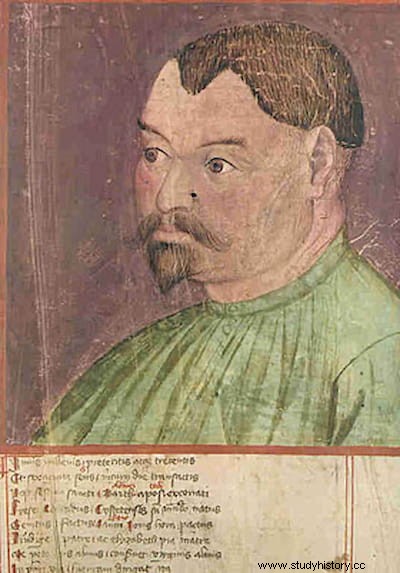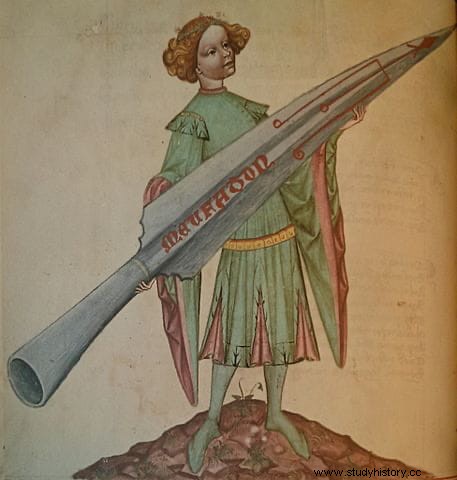Osprey, Almena, Tempus, Platea... Military history fans have the publications of a good number of specialized publishers -plus other general ones with specific sections- to satisfy their passion for the subject.
Now, more than one will wonder how it is possible to know in such detail the war equipment from centuries ago, to what extent what archeology recovers or what is represented by art is enough. The answer lies in the books of the time because, although some may be surprised, militaria treaties were already written in the past.
This specialty lived its first great moment of splendor in that chronological period that covered the passage from the Middle Ages to the Renaissance , when there were dozens of posts that would lay the groundwork for the genre.

Among the most famous are Epitoma rei militari from the late imperial Roman author Publius Flavius Vegetius Renatus or the Totth by the fencing master Hans Talhoffer (a 15th-century manuscript), for example, and both have one thing in common:their editions are based on a third work entitled Bellifortis , a true classic.
Actually De re militari It is earlier but it was not published until the XVI century (in Latin and French) and by then his illustrations were openly inspired by those of Belliforti , as happened with Talhoffer's book, despite being practically contemporary, from the XV , which gives us an idea of the importance that study had over the centuries.
The truth is that the authors fed each other and if Bellifortis was in turn based on the Strategemata , another ancient treatise on military strategy written in the late 1st century AD. by Frontinus (a general of the emperor Domitian), he did it in those of Tito Livio and Valerio Máximo.
The thing is that Bellifortis It is considered the first complete and illustrated study on military technology and, as can be seen, it constituted a model for most of the subsequent bibliography.

Its author was Konrad Kyeser , a German military engineer born in Eichstätt (Bavaria) in 1366. Kyeser dedicated his work to Wenceslaus of Bohemia, who had been King of the Romans (a title used by the main candidate for Holy Roman Emperor until his effective coronation by the Pope ) but that finally he had not obtained the imperial crown when he was deposed by Robert Wittelsbach, ultimately elected emperor with the name of Robert III, hence Kyeser changed the addressee of the book for him.
The writer did not lack war experience:after studying medicine and living at the court of Padua he joined the crusade against the Ottomans which ended in disaster in 1396 with the resounding defeat of Nicopolis. He later settled in Bohemia where, between 1402 and 1405, he devoted himself to writing his work.

It is in Latin and is structured in ten chapters , each dedicated to an aspect of military art or more or less related to it according to the criteria of the time:protected tanks, siege trains, hydraulic devices, elevators, firearms, defensive weapons, wonderful secrets [sic], fires fireworks for war, fireworks for fun and auxiliary tools.
Some of the machines and tools described were new while others existed for a long time, so the reader will see crossbows, cannons, catapults, trebuchets , mobile bridges, boats, assault ladders and even torture instruments, among many other things. I say see because Bellifortis It is characterized by accompanying the texts with very interesting illustrations .

As I said before, it is a very complete book that studies war from multiple perspectives and, although polyorcetics prevails, (fortifications and sieges) for circumstantial reasons, also devotes attention to issues that may seem unheard of today, such as astrology and witchcraft applied in auxiliary technical plan.
In this sense, he presents Alexander the Great as a great magician, although he also attributes to him being a great inventor of war devices (there is even a picture of the Macedonian carrying what some interpret as a rocket with the mysterious inscription MEUFATON and another next to what looks like a gigantic war chariot). Other curiosities included are descriptions of a primal wetsuit or a chastity belt.

In short, all the Military Engineering of the Late Middle Ages is reviewed. putting a special emphasis on technology and magic, all in a very large and sumptuous format (remember that it was a book for the emperor) and profuse graphic accompaniment by Teutonic artists from the scriptorium from Prague sent ex profeso .
For having, it even included a portrait of Kyeser himself , in the manner of current publications that put the author's photo, accompanied by his own epitaph ( May my soul join the Most High ), which would indicate that he was ill and, in fact, it seems that he died shortly after; By the way, art historians believe that this image can be considered one of the first realistic portraits since Antiquity.

Bellifortis It is a manuscript bound in parchment. It was never printed due to its nature as a luxury book , so it was necessary to wait until 1967 to see it in bookstores. A dozen copies were made by hand, but the original is kept in the library of the University of Götingen (current Germany); there are some facsimile editions.
Fonts
Bellifortis (Konrad Kyeser)[Full book in PDF, 85Mb] / Unlocked books. Manuscripts of learned magic in the medieval libraries of Central Europe (Beneder Láng) / The journal of medieval military history (VVAA) / Philosophers of war. The evolution of History's greatest military thinkers (Daniel Coetzee and Lee W. Eysturlid) / Wikipedia.
